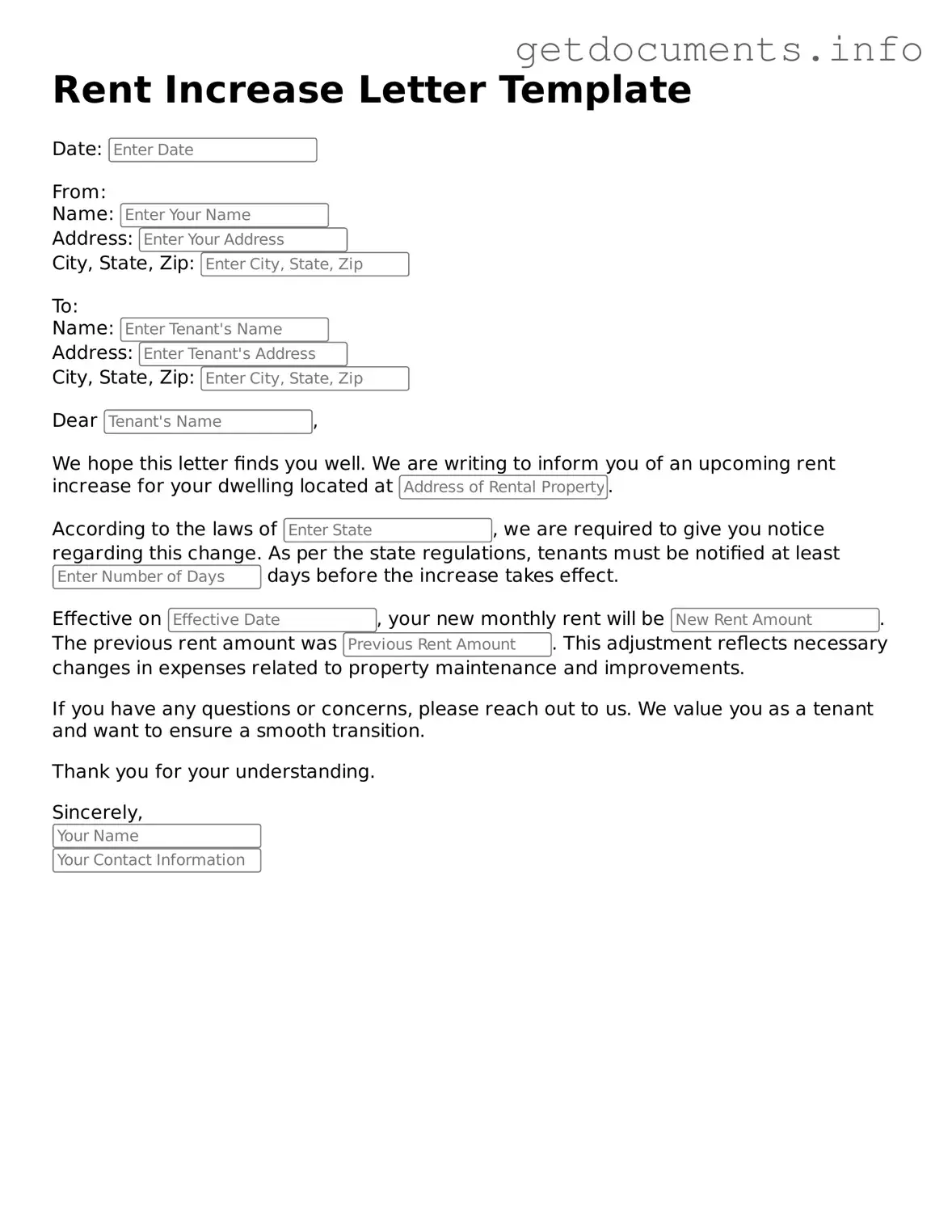Printable Rent Increase Letter Document
A Rent Increase Letter is a formal document used by landlords to notify tenants of an upcoming increase in rent. This letter outlines the new rental amount, the effective date of the increase, and any relevant details regarding the change. Understanding this form is essential for both landlords and tenants to ensure clear communication and compliance with rental agreements.
To get started on filling out the Rent Increase Letter form, click the button below.
Access Rent Increase Letter Editor
